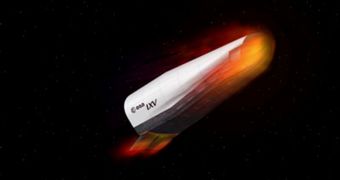Experts with the European Space Agency (ESA) say that they plan to have a robotic mini-shuttle up and running by no later than 2020. The small, unmanned spacecraft will be able to carry experiments to low-Earth orbit, and maybe even travel to the International Space Station (ISS).
This project is currently only in its infancy, officials say. A formal meeting that will decide to fate of the spacecraft will begin later this month. If the parties involved come to an agreement, then there's a good chance that the shuttle will be made operational by the end of this decade.
According to analysts, the idea behind the planned ESA spacecraft is the same that guided the US Air Force (USAF) in creating the X-37B Orbital Test Vehicle (OTV), in collaboration with the US Defense Advanced Research Projects Agency (DARPA).
Two OTV missions have been successfully conducted in the past year, demonstrating that the spacecraft is capable of spending several month in space without experiencing any issues. ESA wants to obtain the same capability.
Europe already has the Intermediate Experimental Vehicle (IXV) project set into motion. This is a stripped-down version of the actual miniature space shuttle. The IXV is now scheduled to make its first flight as early as 2013.
If the flight manages to demonstrate that the technologies aboard function properly, then the latter would be transferred to the full version of the spacecraft as well. Preparations for constructing the IXV finished this May, and now that vehicle can be built.
Manufacturing and assembly contracts for the spacecraft will be awarded at the Paris Air Show, which begins in a week or so, explains Giorgio Tumino. He is the IXV project manager for ESA.
The official adds that both the IXV and the full version of the shuttle will be launched aboard Vega delivery systems, most likely from the ESA Kourou Spaceport, in French Guiana, South America. This is the same facility that the space agency uses to launch the highly-successful Ariane 5 rockets. Recently, the first Soyuz launch pad was inaugurated at the facility, with the first flight scheduled to take place later in the years.
With the IXV and the mini-shuttle program, ESA continues to reaffirm its position as a top player in today's space industry. In addition to this program, the agency also plans to send a large rover and an important orbiter to Mars, among other things, Space reports.

 14 DAY TRIAL //
14 DAY TRIAL //